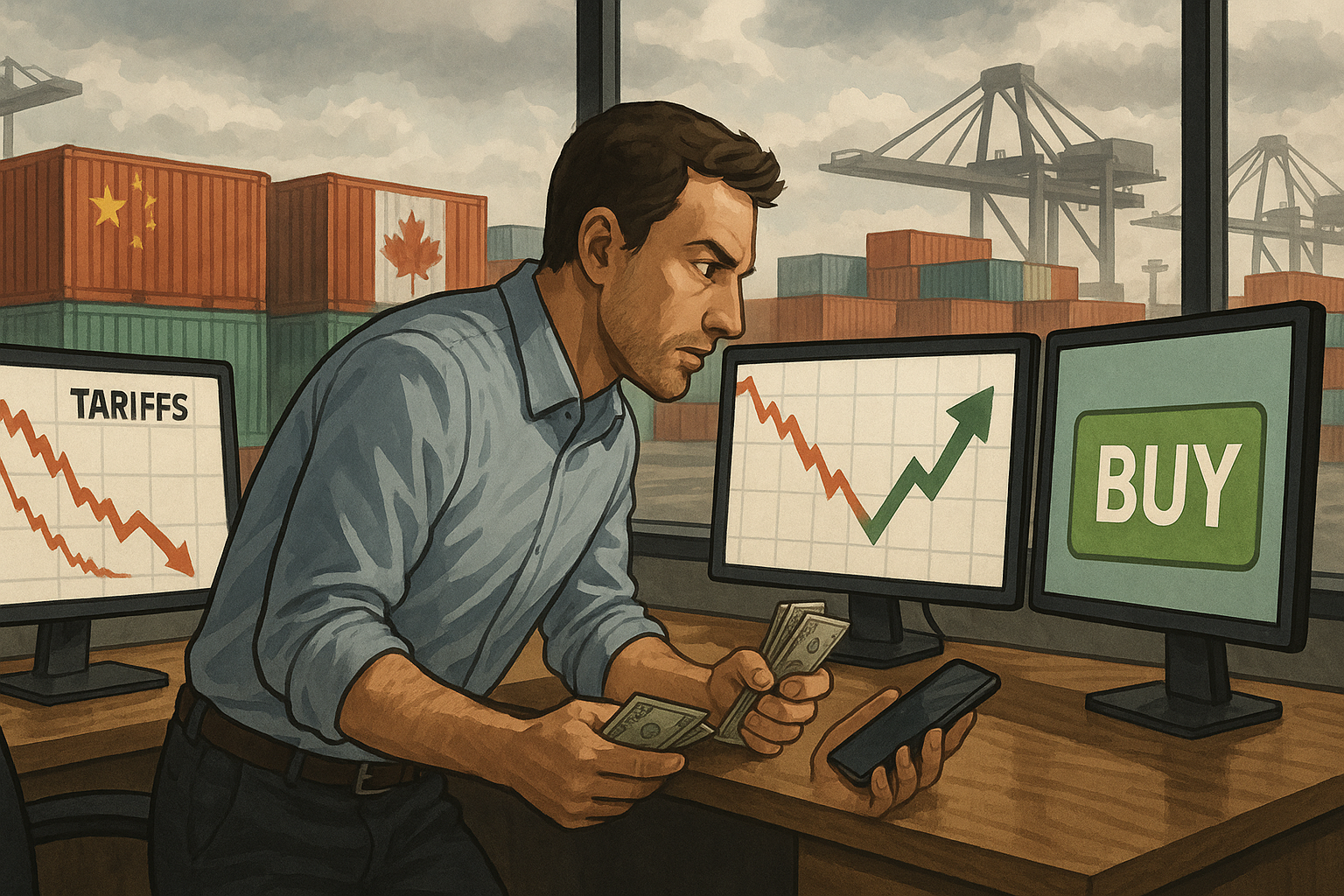So Trump announced his tariff plans, the market's getting jittery, and you're sitting there with cash, eyeing the dip like a hungry trader at an all-you-can-eat buffet. I get it. There's something almost Pavlovian about market selloffs these days – bell rings, stocks drop, buyers salivate.
The April 7th playbook was essentially "buy when others are fearful," which, while sounding suspiciously like a Buffett-ism your uncle would quote at Thanksgiving, has admittedly worked pretty well in our resilient bull market. But let's think about what's actually happening here.
The Tariff Tantrum Trade
Look, Trump's proposed tariff package – 10% on Chinese imports and up to 25% on Mexican and Canadian goods – isn't just a minor policy tweak; it's potentially a significant restructuring of global trade relationships. Markets hate uncertainty, and nothing says "uncertainty" quite like throwing a wrench into established supply chains.
Here's the thing about tariffs: they're essentially a tax, and like any tax, someone has to pay it. The question becomes: who? In theory, it could be: 1. Chinese/foreign producers who lower prices to remain competitive 2. American importers who absorb the costs 3. American consumers who pay higher prices 4. Some messy combination of all three
The market selloff reflects this uncertainty. But your question isn't "should I worry about tariffs?" but rather "which stocks will bounce back fastest?" So let's get to it.
Potential "Tariff Dip" Candidates
When hunting for tariff-resistant opportunities, I'd consider a few categories:
1. Domestic-Focused Consumer Staples
Companies selling necessities primarily made and sold in America. Think Kroger (KR) or Dollar General (DG). People need to eat and buy household essentials regardless of trade tensions, and these companies have less exposure to import tariffs than, say, retailers selling imported electronics.
2. American Manufacturing with Domestic Supply Chains
Companies like Steel Dynamics (STLD) or Nucor (NUE) might actually benefit from tariffs that reduce foreign competition. The tricky part is finding manufacturers that don't rely heavily on imported components.
3. Financial Services
Banks like JPMorgan Chase (JPM) or Bank of America (BAC) have limited direct exposure to tariffs. Their challenge comes more from interest rate expectations, which have been all over the map lately.
4. Healthcare
Companies like UnitedHealth (UNH) or Elevance Health (ELV) provide services largely insulated from international trade disputes. Yes, there are medical devices and pharmaceuticals with international components, but core healthcare services remain domestic.
5. Utilities
NextEra Energy (NEE) or Southern Company (SO) might see limited impact. People need electricity regardless of tariffs, and these companies typically have regulated returns.
The Contrarian Play
Here's where it gets interesting. The obvious "safe" plays above are... well, obvious. Everyone can see them. The potentially bigger opportunity might be in the hardest-hit sectors – specifically, companies with: 1. China/Mexico/Canada exposure that's less severe than the market fears 2. Pricing power to pass costs to customers 3. Supply chain flexibility to adapt
For example, Apple (AAPL) might get hit hard initially (hello, Chinese manufacturing), but they have both pricing power and ongoing efforts to diversify manufacturing. Similarly, Lululemon (LULU) has shown remarkable pricing power and supply chain agility.
The Patience Factor
You mentioned sitting back and watching stocks grow "over the next couple of months." That timeframe is... ambitious. Supply chain reorganizations and trade policy implementations don't happen overnight. The April 7th dip you referenced was a technical correction in an otherwise bullish market, not a fundamental economic restructuring.
A better approach might be identifying quality companies unfairly punished in the selloff, then holding them through the adjustment period – which could be quarters, not months.
The Real Question
The most crucial question isn't which stocks to buy, but whether this is truly a "dip" or the beginning of something more prolonged. Markets have largely ignored recession risks and kept climbing the proverbial wall of worry. If tariffs trigger actual economic contraction rather than just temporary disruption, your shopping list should look very different.
For Monday morning specifically? I'd watch rather than pounce. First reactions are often overreactions, but second and third-order effects take time to materialize. The real bargains might come after analysts have had time to publish revised estimates and institutional investors rebalance accordingly.
Remember: the market gave you this opportunity; it will likely give you others. Patience rarely bankrupts investors, but FOMO frequently does.




